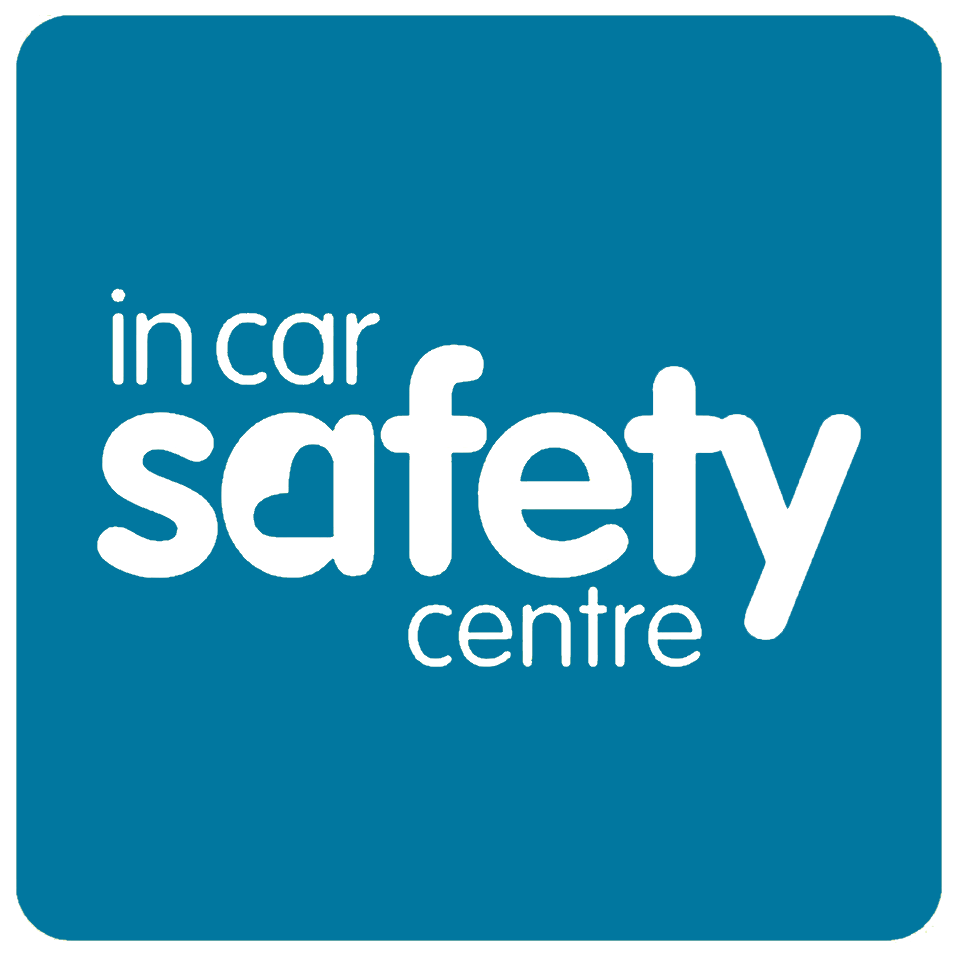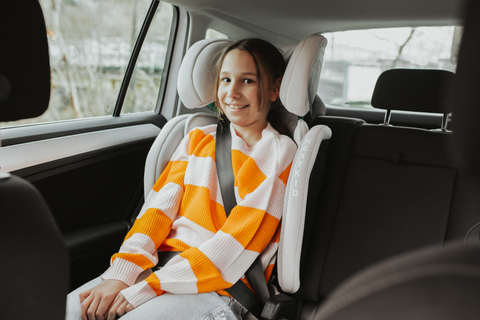As the seasons change and children return to school after the summer holidays, many parents discover their child has outgrown their car seat. This is a crucial turning point in your child’s journey towards independent travel — and it’s also when our role as a trusted safety advisor matters most.
The question parents often ask at this stage is:
“Should I buy a booster cushion or a high-back booster seat?”
While a cushion may seem convenient, the truth is that a high-back booster offers a fundamentally higher level of protection, comfort, and long-term safety benefits. In this guide, we’ll explain exactly why — and give you the tools to confidently decide on the best option for your family.
Why This Stage Matters So Much
Children don’t fit into adult seatbelts until they are much taller — in fact, most kids don’t achieve a safe adult belt fit until around 150 cm in height. Until then, they need a dedicated child restraint to make sure the seatbelt protects their strongest bones and avoids their most vulnerable areas.
This is where booster seats come in:
-
A booster cushion simply raises the child so the lap belt sits lower on the hips.
-
A high-back booster does this and much more, by guiding the shoulder belt, protecting the head and torso, and supporting the child’s posture.
1. The Safety Difference: Side-Impact Protection
The single most important advantage of a high-back booster is its ability to protect a child in a side collision.
-
High-back booster: Creates a protective shell with padded headrests and side wings, absorbing crash forces and shielding the head, neck, and torso.
-
Booster cushion: Offers no side impact protection. A child’s head and upper body are exposed.
In practice: Side-impact collisions are common on everyday roads (junctions, roundabouts, side streets). Parents are often shocked to realise that a cushion leaves their child completely unprotected in these scenarios.
2. Correct Seat Belt Fit: The Hidden Lifesaver
A seatbelt only protects effectively when it sits in the right place. A high-back booster helps achieve this in two ways:
-
Shoulder belt guides: Keep the belt across the middle of the shoulder and chest, not cutting into the neck or slipping off the shoulder.
-
Lap belt positioning: Ensures the belt sits low across the hips and upper thighs, away from the soft stomach area, reducing the risk of internal injuries in a crash.
A cushion lifts the child, but doesn’t control the angle of the belt. This can leave the shoulder strap digging into the neck or the lap belt riding dangerously high over the stomach.
3. Comfort and Posture on Every Journey
Comfort isn’t just a “nice to have” — it’s a safety issue too.
-
High-back boosters support the head and neck, keeping children upright even if they fall asleep. This prevents slumping, which would otherwise shift the seatbelt out of position.
-
Cushions provide no head or torso support, so a sleeping child may lean forward or sideways, compromising their protection.
4. Growth and Adjustability
Children grow fast — and their car seat needs to keep up.
-
High-back boosters usually feature adjustable headrests that “grow” with the child, ensuring the belt guides remain correctly positioned over several years.
-
Cushions are one-size-fits-all, meaning the fit becomes less precise as the child grows.
5. Practical Considerations: Cost vs. Value
-
Cushions: Lightweight, cheap, easy to swap between cars.
-
High-back boosters: Slightly more expensive, bulkier — but offer significantly more protection.
Side-by-Side Comparison
| Feature | High-Back Booster | Cushion / Backless Booster |
|---|---|---|
| Side-impact protection | Yes – head, neck, torso | None |
| Seat belt positioning | Shoulder & lap guides ensure correct fit | Relies solely on car belt |
| Head & neck support | Prevents slumping, especially when sleeping | None |
| Posture | Keeps child upright, belt low on hips | Easier to slouch, belt may ride up |
| Adjustability | Headrest grows with child | Fixed height |
| Comfort | More padding, enclosed feel | Minimal comfort |
| Portability | Bulkier, heavier | Very light, easy to move |
| Best for | Everyday use, younger & mid-age children, long trips | Older kids, short trips, spare seats |
Age & Height Guidelines for Parents
-
High-back booster: From around 4–5 years old (once a child has outgrown their forward-facing harness) through to 12 years or 135–150 cm tall. Best practice is to continue until the seatbelt fits correctly without assistance.
-
Cushion / backless booster: Only suitable for older, taller children (≥125 cm and ≥22 kg), and only in cars with proper headrests and good belt geometry.
-
Adult seatbelt only: Safe once a child passes the 5-step seatbelt test (usually closer to 150 cm tall):
-
Can sit back against the seat
-
Knees bend comfortably at the edge
-
Lap belt sits low across the hips
-
Shoulder belt crosses the chest and mid-shoulder
-
Child can maintain this position for the whole journey
-
Final Word: Why High-Back Boosters Win Every Time
While booster cushions remain legal and convenient for older children, high-back boosters are the gold standard for child car safety. They provide:
-
Superior side-impact protection
-
Correct and consistent belt positioning
-
Comfort and posture support for real-world journeys
-
Flexibility to grow with the child.
If you are still unsure contact one of our fully trained staff on info@incarsafetycentre.co.uk or via telephone - 01702 808313.
You can also book in for a free in-store appointment to talk through your options. Book now.







Comments (0)
There are no comments for this article. Be the first one to leave a message!